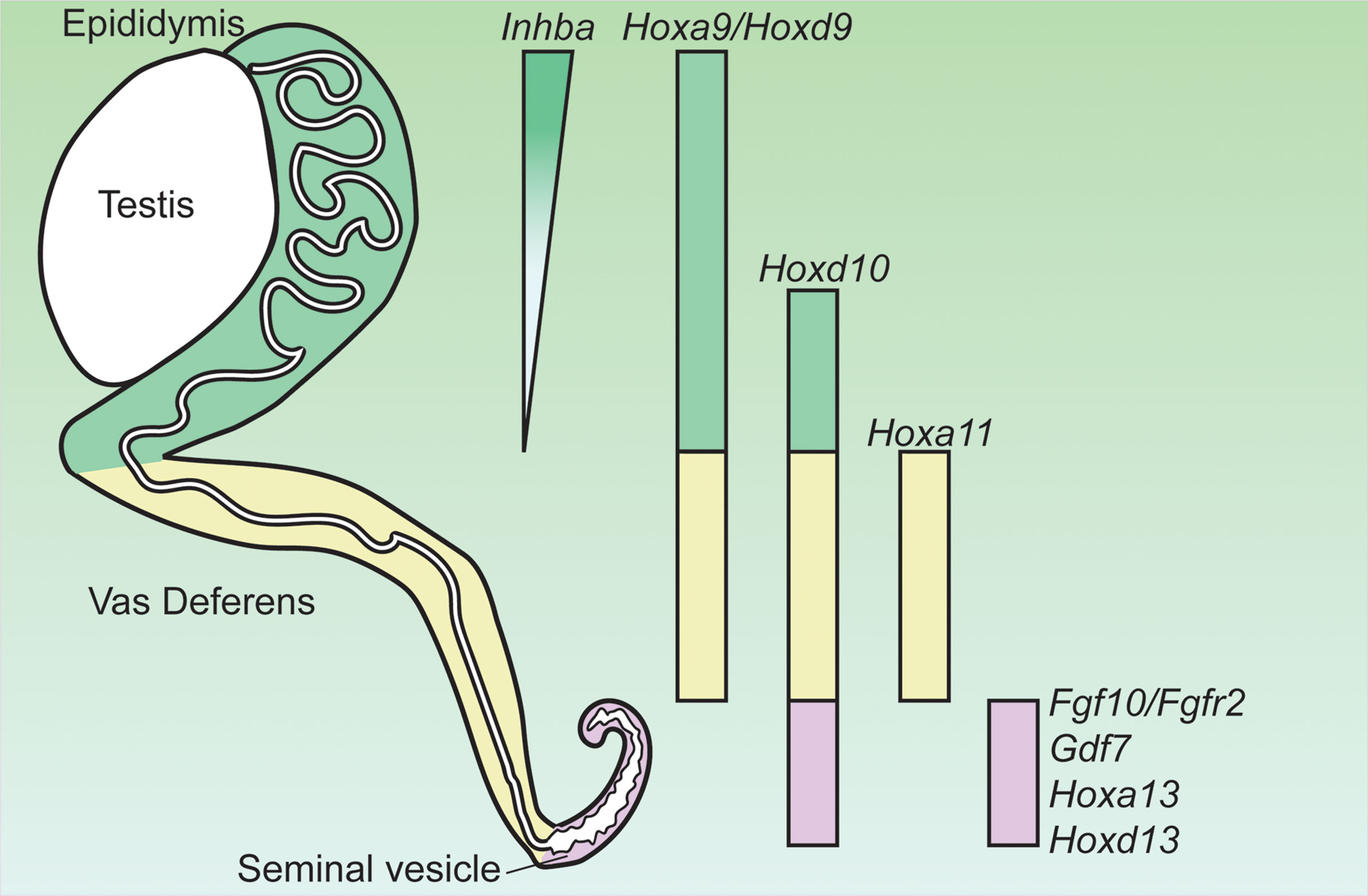腎の構造と機能
腎臓の形成、発生
Embryology | Development of the Urinary System Ninja Nerd (44:28) チャンネル登録者数 301万人
Development of the Kidneys | Renal Embryology | Development of the Urinary System | Embryology (5:30) Byte Size Med チャンネル登録者数 10.7万人最初に完成形を見せてから発生の話に入る順番が良い。
ネフロンの形成メカニズム
In response to a signal from the ureter 尿管, mesenchymal cells condense, aggregate into pretubular clusters and undergo an epithelial conversion generating a simple tubule. This then undergoes morphogenesis and is transformed into the excretory system of the kidney, the nephron. We report here that the expression of Wnt-4, which encodes a secreted glycoprotein, correlates with, and is required for, kidney tubulogenesis. Mice lacking Wnt-4 activity fail to form pretubular cell aggregates; however, other aspects of mesenchymal and ureteric development are unaffected. Thus, Wnt-4 appears to act as an autoinducer of the mesenchyme to epithelial transition that underlies nephron development. (Nature . 1994 Dec 15;372(6507):679-83. doi: 10.1038/372679a0. Epithelial transformation of metanephric mesenchyme in the developing kidney regulated by Wnt-4 K Stark 1, S Vainio, G Vassileva, A P McMahon https://pubmed.ncbi.nlm.nih.gov/7990960/)
男性生殖器、女性生殖器の発生
内性器は「ミュラー管」(卵管や子宮になる)と「ウォルフ管」(精管や精嚢になる)が起源となります。医師国家試験の時に「男はオオカミだからウルフ(ウォルフ管)、女性は鏡を見るからミラー(ミューラー管)」なんて覚えましたね!
https://medical-tribune.co.jp/rensai/articles/?blogid=11&entryid=564331
- One Tool for Many Jobs: Divergent and Conserved Actions of Androgen Signaling in Male Internal Reproductive Tract and External Genitalia REVIEW article Front. Endocrinol., 30 June 2022 Sec. Reproduction Volume 13 – 2022 | https://doi.org/10.3389/fendo.2022.910964

- Development of the Human Penis and Clitoris Differentiation. 2018 Sep-Oct; 103: 74–85. Published online 2018 Aug 23. doi: 10.1016/j.diff.2018.08.001 PMCID: PMC6234061

- The cell biology and molecular genetics of Müllerian duct development January 2018 Wiley Interdisciplinary Reviews: Developmental Biology 7(2):e310 DOI:10.1002/wdev.310 ResearchGate
- Herrera AM, Cohn MJ. Embryonic origin and compartmental organization of the external genitalia. Sci Rep. 2014 Nov 5;4:6896. doi: 10.1038/srep06896. PMID: 25372631; PMCID: PMC4894444. the genital tubercle, the precursor of the penis and clitoris, arises from two populations of progenitor cells that originate at the lateral edges of the embryo, at the level of the posterior hindlimb buds and anterior tail. During body wall closure, the left and right external genital progenitor pools are brought together at the ventral midline, where they form the paired genital swellings that give rise to the genital tubercle.
- Lin C, Yin Y, Veith GM, Fisher AV, Long F, Ma L. Temporal and spatial dissection of Shh signaling in genital tubercle development. Development. 2009 Dec;136(23) 3959-3967. doi:10.1242/dev.039768. PMID: 19906863; PMCID: PMC2778743.
- HOXA13 directly regulates EphA6 and EphA7 expression in the genital tubercle vascular endothelia Carley A. Shaut, Chie Saneyoshi, Emily A. Morgan, Wendy M. Knosp, Diane R. Sexton, H. Scott Stadler 15 February 2007 https://doi.org/10.1002/dvdy.21077
-
Unique functions of Sonic hedgehog signaling during external genitaliadevelopment 2001 ResearchGate
陰茎の長さと指の長さとの関連、生殖器と手の形成の関連
- Length of fingers and penis are related through fetal Hox gene expression Martin Voracek, D.Sc. John T. Manning, Ph.D. LETTER TO THE EDITOR Urology VOLUME 62, ISSUE 1, P201, JULY 2003 DOI:https://doi.org/10.1016/S0090-4295(02)02598-0
- Mortlock, D., Innis, J. Mutation of HOXA13 in hand-foot-genital syndrome . Nat Genet 15, 179–180 (1997). https://doi.org/10.1038/ng0297-179 We report the identification of a HOXA13 nonsense mutation in a family with hand-foot-genital syndrome.
- Hand-foot-genital syndrome Variants (also called mutations) in the HOXA13 gene cause hand-foot-genital syndrome. The HOXA13 gene provides instructions for producing a protein that plays an important role in development before birth. Specifically, this protein appears to be critical for the formation and development of the limbs (particularly the hands and feet), urinary tract, and reproductive system.
男性生殖器、女性生殖器の形成 講義動画
- Cincinnati University Reproductive Physiology Lecture 2 Determination of Sex(0:58) Errors in Gonadal Differentiation and Development (True hermaphroditism)(1:47) Lecture 5 Spermatogenesis (2:45) Lecture 6 Formation of the Placenta (1:09)
陰茎骨について
- なぜ人間のペニスには「骨」がないのか? 2016年12月15日 21時00分 Gigazine 最初に陰茎骨を獲得した動物が誕生したのは1億4500万年前から9500万年前の間で、すべての霊長類と肉食動物に共通する祖先が陰茎骨を持っていたことが分かっています。現代でも多くのほ乳類や、人間に近いチンパンジーやボノボなどの霊長類が陰茎骨を持ち合わせており、むしろ人間は例外的な部類に含まれます。
- Epithelial-Mesenchymal Interactions in Development of the Mouse Fetal Genital Tubercle Eric A. Kurzrock; Laurence S. Baskin; Yingwu Li; Gerald R. Cunha Cells Tissues Organs (1999) 164 (3): 125–130 The mesenchyme of the adult mouse penis consists of a corpus cavernosum and proximal and distal bones. The differentiation of penile mesenchyme into bone and cartilage begins after birth and can be accelerated by androgens.
語句
参考図書:ムーア人体発生学
- 泌尿生殖器系 urogenital system
- 泌尿器系 urinary system
- 生殖器系 genital system
- 尿生殖堤 urogenital ridge
- 造腎索 nephrogenic cord
- 生殖堤 gonadal ridge
- 前腎 pronephroi
- 中腎 mesonephroi; mesonephric kidnesy
- 中腎管 mesonephric duct
- 中腎細管 mesonephric tubule
- 後腎 metanephroi (永久腎)
- 排泄腔 cloaca
- 原基 primordium
- 尿管芽 ureteric bud
- 後腎芽組織 metanephrogenic blastema
- 尿管 ureter
- 集合管 collecting tubules(duct)
- 大腎杯(だいじんぱい)major calices
- 小腎杯 minor calices
- 糸球体 glomerulus
- ボーマン嚢 Bowman’s capsule
- ネフロン nephron